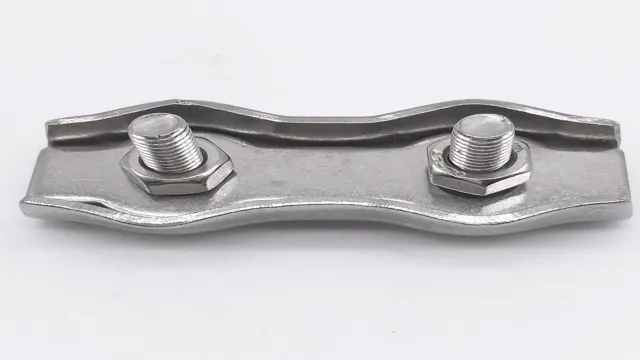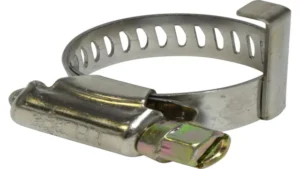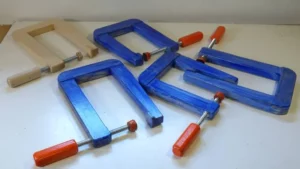When working with wire ropes, many people often wonder how many cable clamps are necessary to secure the rope in place. It’s a common question that arises due to safety concerns and the need for an efficient and reliable system. The answer, however, is not as straightforward as one might think.
The number of cable clamps required depends on several factors, including the rope size, the type of clamp used, and the intended load. In this blog, we will discuss the various factors that determine the number of clamps necessary and provide some helpful tips for anyone looking to secure wire ropes with confidence. So, fasten your seatbelts, and let’s dive in!
Understanding cable clamps and wire ropes
If you’re wondering how many cable clamps you need on your wire rope, the answer is typically based on the wire rope’s diameter. In general, a minimum of three clamps should be used, with additional clamps added for larger diameter wires. The clamps should be spaced apart at least the diameter of the wire rope, with the first clamp placed 6-8 inches from the end of the rope.
It’s crucial to follow the manufacturer’s guidelines for the specific type of wire rope and clamp being used to ensure proper installation and safety. Cable clamps are essential components of wire rope systems. They provide a way to securely attach and hold the wire rope in place, preventing it from unraveling or slipping.
Wire ropes are commonly used for various applications, including lifting heavy loads, supporting structures, and securing equipment. Understanding the proper use of cable clamps can help ensure that your wire rope system is safe and reliable.
What are cable clamps?
Cable clamps, also known as wire rope clips, are small devices used to secure wire ropes and cables. They are made up of a U-shaped bolt, a saddle, and two nuts. The wire rope is placed in the saddle, and the U-bolt fits over the rope, sandwiching it between the two nuts.
Cable clamps are essential for ensuring the safety of rope and cable structures, as they prevent the wire from slipping or unraveling. On boats and ships, they are often used to secure rigging, while in construction, they are used for cable barriers and fences. Understanding cable clamps and their proper usage is crucial to ensuring the safety of structures that rely on wire ropes and cables.

What are wire ropes?
Wire ropes are durable and strong cables made up of multiple strands of wire twisted together. They are extensively used in construction, mining, and transport industries and can be used for various applications like suspension bridges, elevator shafts, and even ski lifts. When using wire ropes, it’s important to understand how to properly clamp them using cable clamps to ensure their secure placement.
Cable clamps are U-shaped metal clips that are fastened tightly around the rope to prevent it from slipping or moving. These clamps are an essential component of wire rope assemblies and can be used to adjust their length or attach them to other objects. Understanding cable clamps and wire ropes is crucial to ensure their safe and reliable use in different applications.
Factors to consider when determining the number of cable clamps
When it comes to wire rope, it’s essential to use the right number of cable clamps to ensure a safe and secure hold. The number of cable clamps required will depend on the cable’s diameter, application, and load capacity. As a general rule, a minimum of two cable clamps should be used, with additional clamps required for larger wires and heavier loads.
However, it’s crucial to refer to manufacturer guidelines and regulations when determining the number of clamps required. It may also be necessary to use specialized tools when installing the clamps, such as a torque wrench, to ensure that they are tightened to the correct specifications. Taking the time to properly calculate the number of cable clamps needed is critical to maintaining safety and preventing accidents or failures.
So, don’t hesitate to consult with professionals or manufacturer guidelines to ensure you have the right number of clamps for your application needs.
Diameter and construction of wire rope
When it comes to determining the number of cable clamps needed for a wire rope, several factors need to be considered. The diameter of the wire rope is one of the most critical factors to consider, as it determines the strength and durability of the rope. A thicker wire rope will require more cable clamps to ensure that it is securely fastened and will not come undone during use.
Additionally, the construction of the wire rope is also a significant factor in determining the number of clamps needed. Wire ropes with a higher number of wires or strands will require additional clamps to ensure that they are properly secured. It’s always essential to refer to the manufacturer’s guidelines or consult with a professional to determine the appropriate number of cable clamps needed for your specific application.
By considering these factors, you can ensure that your wire rope is safely and securely fastened, providing optimal performance and reliability.
Type of cable clamp used
When determining the number of cable clamps to use, there are several factors to consider. The type of cable clamp used is an important consideration as it determines the level of support provided to the cable. For instance, a plastic clamp may not be as sturdy as a metal clamp.
The size and weight of the cable also influence the number of cable clamps required. A heavier and larger cable may require more support than a lighter and smaller one. Moreover, the environmental conditions in which the cable will be installed should also be considered.
If the cable is to be installed in harsh weather conditions or exposed to excessive moisture, more cable clamps may be required to ensure the cable is properly supported and protected. Additionally, the distance between the cable clamps is a crucial aspect to consider. If the distance is too far, the cable may be prone to bending or sagging, which can lead to damage or poor performance.
Therefore, it is essential to carefully assess these factors before installing cable clamps to ensure that the cable is adequately supported and protected.
Tensile strength required for the application
When determining the number of cable clamps needed for an application, one crucial factor to consider is the tensile strength required. The tensile strength of a cable clamp refers to the maximum stress the clamp can handle before breaking or yielding. To determine the required tensile strength, it is essential to consider the weight and pulling forces that the cable will be subjected to.
Additionally, factors such as the diameter of the cable, the environment in which it will be used, and the expected temperature range should also be taken into account. Selecting the right sized cable clamps and ensuring their proper installation is critical for ensuring reliable and safe cable management. You don’t want to risk having cables weighing down too heavily on a clamp and causing untimely damage or failure.
By taking such factors into consideration, you can choose cable clamps with the appropriate tensile strength for your specific application, increasing their lifespan and ultimately protecting your equipment and infrastructure.
Determining the number of cable clamps for your wire rope
If you’re wondering how many cable clamps are required for your wire rope, there are a few things to keep in mind. The number of clamps needed depends on the diameter of the wire rope and the type of clamp you’ll be using. Generally, it’s recommended to use at least three cable clamps, spaced approximately six rope diameters apart.
This ensures a secure and stable connection that can handle the weight and loads placed on it. It’s important to note that the number of cable clamps required for a particular application can vary, so it’s best to consult with a professional to determine the exact number needed. Additionally, it’s crucial to make sure the clamps are properly installed, with the U-bolt on the dead end of the rope and installed according to the manufacturer’s instructions.
Doing so will ensure the wire rope is safe and secure, with no risk of slipping or coming loose.
Using standard guidelines and charts
Determining the number of cable clamps for your wire rope can seem daunting, but fortunately, there are standard guidelines and charts that can help simplify the process. These guidelines take into account factors such as the diameter of the rope, the desired level of clamping force, and the type of clamp being used. It is important to choose the correct number of clamps for your wire rope to ensure proper security and prevent slippage.
Using too few clamps can result in a weak and unsafe connection, while using too many can add unnecessary weight and bulk. By following the recommended guidelines and charts, you can have peace of mind knowing your wire rope is securely clamped and will perform as intended. So next time you need to determine the number of cable clamps for your wire rope, turn to these useful tools for a safe and reliable solution.
Performing calculations based on factors
Calculating the number of cable clamps required for your wire rope can be a tricky task, but it’s essential to ensure the safety and security of your equipment. Several factors go into determining the number of clamps required, including the diameter of the wire rope, the number of strands, and the type of application. A general rule of thumb is to use at least three clamps, evenly spaced, for wire ropes up to 1 inch in diameter.
For larger wire ropes, it’s recommended to use four clamps or more. It’s crucial to note that you shouldn’t rely on the number of clamps alone and must follow the manufacturer’s guidelines for installation and usage. Remember, cable clamps provide a secure connection that prevents the wire rope from slipping, so always ensure that you use the correct number of clamps to maintain safety and prevent accidents.
Conclusion: Proper cable clamp application is essential for wire rope safety
Asking how many cable clamps are needed on a wire rope is like asking how many toppings are needed on a pizza – it depends on the size and the desired strength. Too few clamps can lead to dangerous, unraveled cables, while too many can weigh down the rope and decrease its flexibility. So, the key is to carefully evaluate the situation and choose the right number of clamps to secure your wire rope, just like how you carefully choose your pizza toppings to make a delicious creation.
“
FAQs
How do cable clamps work on wire rope?
Cable clamps are used to secure wire rope by compressing the wire rope and holding it in place. They typically consist of a U-shaped bolt, a saddle, and two nuts which tighten the saddle around the wire rope.
How many cable clamps should I use on my wire rope?
The number of cable clamps required depends on the size of the wire rope and the application. As a general rule of thumb, most manufacturers recommend using at least three cable clamps spaced evenly apart to secure wire rope.
What size cable clamps do I need for my wire rope?
The size of the cable clamps needed for your wire rope depends on the diameter of the wire rope. Manufacturers typically provide recommended clamp sizes based on wire rope diameter.
Can I reuse cable clamps on wire rope?
It is not recommended to reuse cable clamps on wire rope as they can become damaged or weakened after use. It is always best to use new cable clamps for each application.
How tight should I make my cable clamps on wire rope?
Cable clamps should be tightened using a torque wrench to the recommended torque specified by the manufacturer. Over-tightening the clamps can damage the wire rope and cause it to fail.
Can cable clamps be used on stainless steel wire rope?
Yes, cable clamps can be used on stainless steel wire rope. However, it is important to ensure that the clamps are compatible with the material of the wire rope.
When should I replace cable clamps on wire rope?
Cable clamps should be inspected regularly for signs of wear or damage. They should be replaced if there are any cracks, distortion, or corrosion present on the clamps or wire rope.






